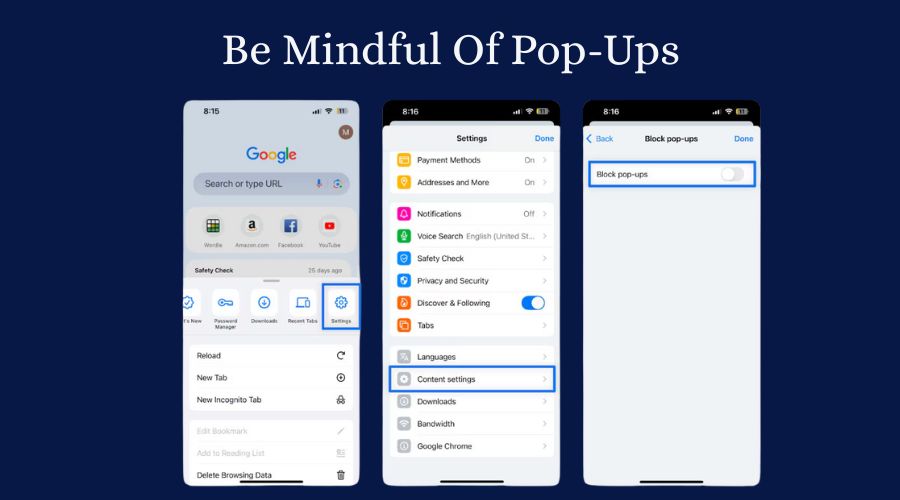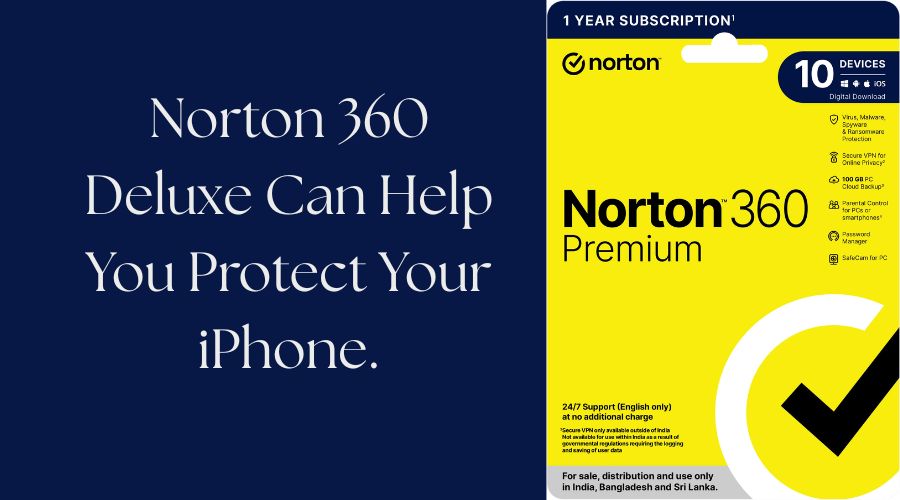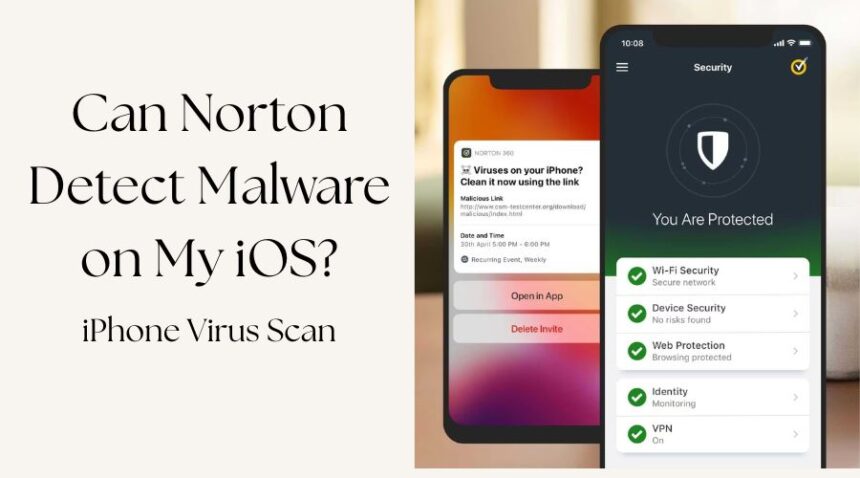Do you believe that iPhones are virus-proof? Rethink your thought. Even while iPhones are thought to be less liable than other gadgets, if you’re not vigilant, they might get infected with malware. To find out how to scan your iPhone for viruses, continue reading. Then, to keep your phone malware-free and operating efficiently, download a specialized iOS security app.
iPhones may indeed have viruses, even though you may have heard otherwise. Even while iOS security is generally robust, malware and viruses are a constant concern that might arise and impact your phone’s performance in a variety of ways. Hence, iPhone virus scans are a must.
Here’s how an iPhone virus scan can be done:
1. Look for unknown apps.
Look for unknown apps on your iPhone before scanning for infections. Delete any unknown apps you don’t recall installing on your iPhone right away, since they can be infected with a virus.
By looking through Apple’s App Store, you may determine whether the app is an officially approved iOS-compatible app. If it’s missing, it might have sneaked in with another download from a third-party app store. By touching and holding on the app icon, choosing Remove app, and then tapping Delete app to confirm, you can remove apps from your home screen.
2. Examine how much data you use.
Unusual increases in data usage could be a sign that your iPhone has a virus, so check how much data you’ve been consuming to determine when and why the spike happened. iPhone malware has the ability to swiftly burn up your data plan without you even realizing it.
Because we don’t always use our phones in the same manner, data usage might vary greatly. However, if your data usage suddenly increases dramatically and without explanation, it may indicate that a virus has invaded your phone and is using up your data.
3. Keep an eye on how much power you use.
If a virus has infiltrated your phone, power usage may also vary greatly. It’s uncommon for a relatively new phone’s battery to run out of power in less than a day with frequent use, even though batteries typically deteriorate over time.
There could be several reasons why your battery is depleting quickly, such as leaving your hotspot or Bluetooth on, having too many background apps open, or having an excessively bright screen. However, an iPhone virus has the ability to drain your battery’s charge for its own malicious ends. Look for more signs that your phone might be infected with a virus by investigating the source of your power usage and get your iPhone virus scan.
4. Evaluate the performance of your gadget.
When determining whether your gadget is virus-free, you should also evaluate its performance. A virus can have a detrimental effect on an iPhone’s overall functionality, including battery and data usage.
Is there a slowness in your iPhone? Do apps frequently crash and take ages to load? Does your iPhone heat up? When you try to reload your app or email feeds, do you get errors? It can simply be due for an iOS update, or it might indicate that a virus is limiting the functionality of your phone.
5. Be mindful of pop-ups.

Pop-ups are not limited to desktop computers; they can also appear on mobile devices, particularly when playing free games or visiting websites. Certain pop-ups, such as phony virus notifications that, if clicked, could infect your phone with a real virus, are not only annoying but also dangerous. Adware or another infection may be infecting your iPhone if you’re receiving more pop-ups than normal.
Eliminating pop-up advertisements on your iPhone is a good place to start. See whether this enhances the device’s functionality. However, deleting pop-ups is probably not going to remove a virus. Rather, you should get your iPhone virus scan and eliminate the malware using a virus removal application.
6. Verify whether your iPhone has been jailbroken.
Unless your iPhone is jailbroken, the closed ecosystem of the iOS operating system makes it impossible for viruses to proliferate. Jailbreaking entails eliminating iOS device constraints to enable programs from sources other than Apple’s app store, but it may also increase your phone’s susceptibility to infections.
By looking for hidden apps like Cydia, which are only compatible with jailbroken iPhones, and deleting default apps, you may determine whether your phone is jailbroken. Your iPhone might be jailbroken if you can’t see the Safari, Podcasts, or Mail apps.
Restoring your iPhone to factory settings will reverse this procedure; however, be sure to back up all of your data first to prevent data loss.
7. Launch an antivirus app on your iPhone.
Using mobile antivirus software is the simplest and most dependable way to identify and get rid of iPhone viruses. Look for a specialized iOS app from a reliable security company, like Norton 360 Deluxe.
Reputable antivirus apps will have a high download count and, unless they are brand-new, decent ratings and reviews. Be wary of unrated apps and unknown businesses that can be fraudulent.
Norton 360 Deluxe can help you protect your iPhone.

Using a strong antivirus program is the best method to make your iPhone safer and more secure. In addition to detecting and eliminating viruses, Norton 360 Deluxe offers real-time heuristic malware protection and guards against other online frauds, such as phishing attacks and phony websites.
FAQs about checking your iPhone for viruses
It’s possible that many consumers are unaware that viruses can infect iPhones. We address some frequently asked concerns below regarding how viruses impact and how iPhone virus scans can be done.
Q1. What impact do viruses have on iPhones?
Overheating, a dead battery, more data usage, and crashing or malfunctioning apps are all common consequences of iPhone viruses. While it’s normal for some of those problems to occur occasionally, a virus is more likely to be the culprit if they occur frequently or all at once.
Q2. How can an iPhone infection be removed?
An iPhone infection can be removed in a few different ways. Update your iOS and restart your phone first. Next, try deleting the data and browsing history on your iPhone. These easy steps will help remove viruses and free up memory on your iPhone.
After following those instructions, a deeper memory wipe might be required if the malware is still present on your iPhone. Try restoring your iPhone to a previous backup version from before the odd behavior began.
To remove all of your phone’s data, if that doesn’t work, do a factory reset. Make sure you back up all of your crucial data, including contact lists, documents, images, and other information you’ll want to save, before you factory reset your phone.
Q3. What are some ways to prevent iPhone viruses?
The following are crucial actions to help prevent viruses: Use specialized mobile security software like Norton 360 Deluxe, avoid jailbreaking your phone, allow automatic iOS upgrades, and only download apps from reliable sources or the Apple App Store.
Q4. Does Norton 360 identify iPhone spyware?
Norton 360 Standard offers unwavering protection to help prevent spyware and other viruses from infecting your iPhone or iPad.
Q5. How can I use Norton 360 to perform a scan on my iPhone?
Use Norton 360 to do a scan.
- The Norton 360 software looks for installed files and applications on your device. Examine the security concerns on the Security screen to see if any items need attention.
- Open the Norton 360 app from the home screen.
- Tap Run Smart Scan on the Norton 360 app’s home screen.





